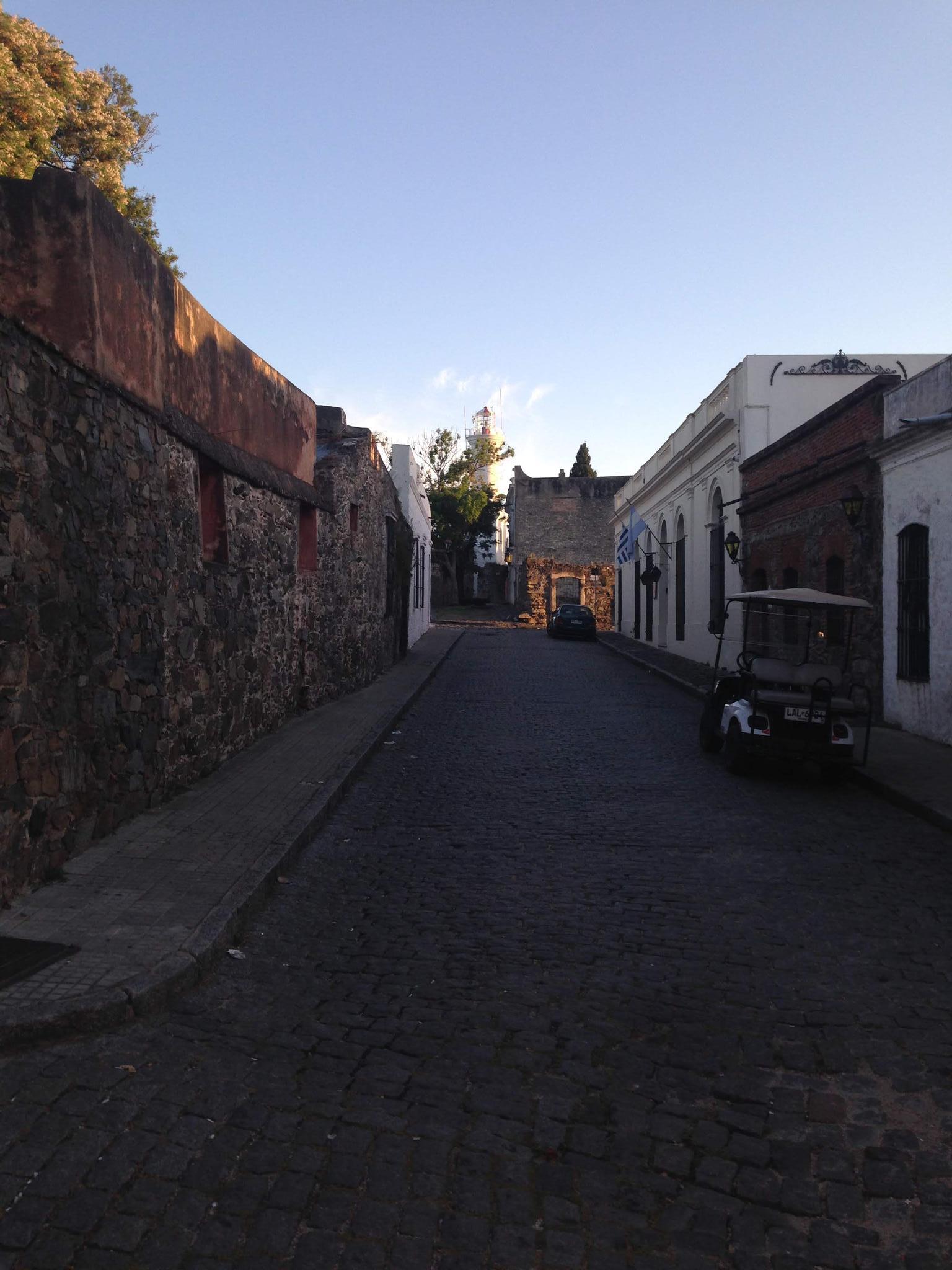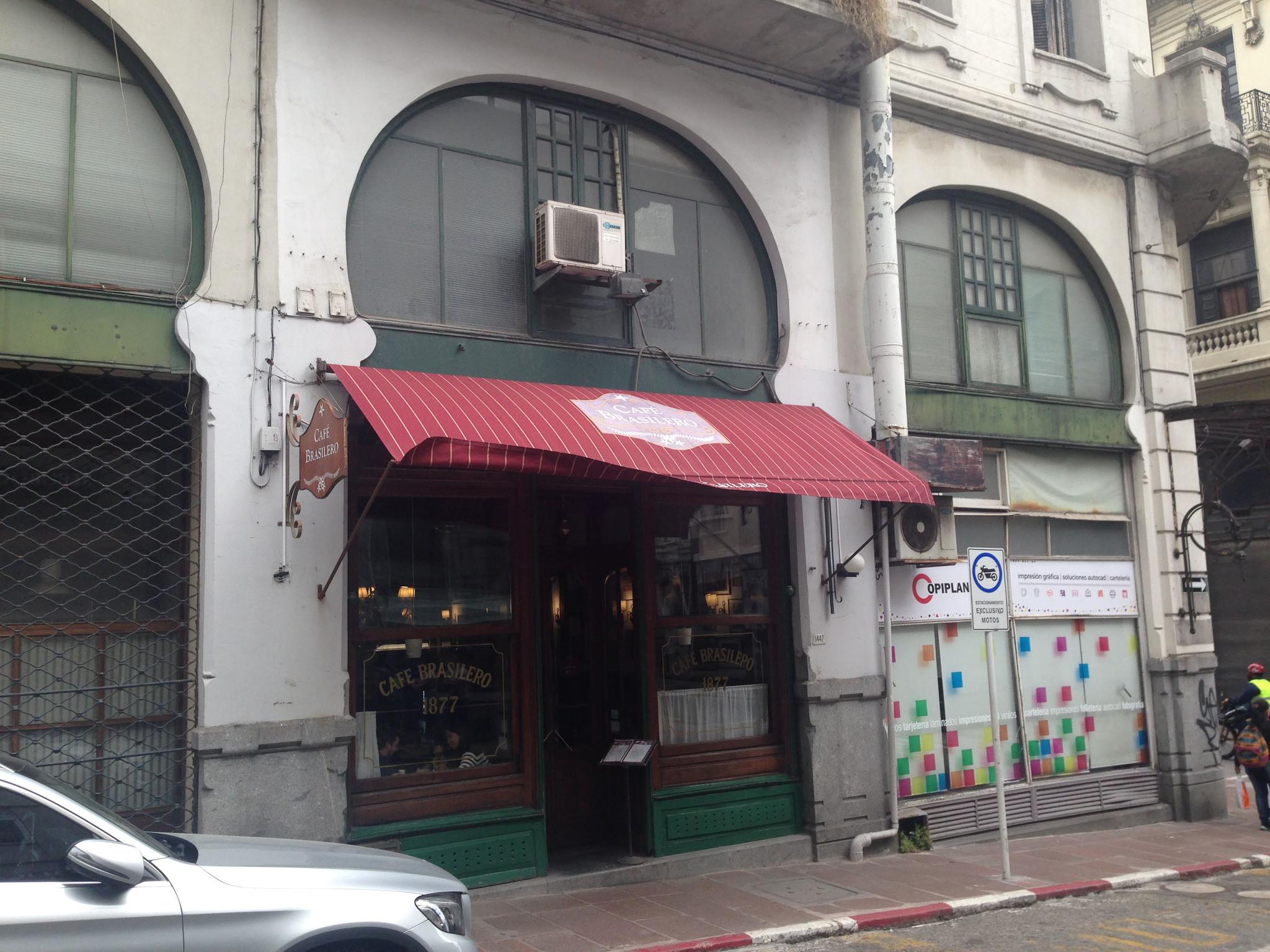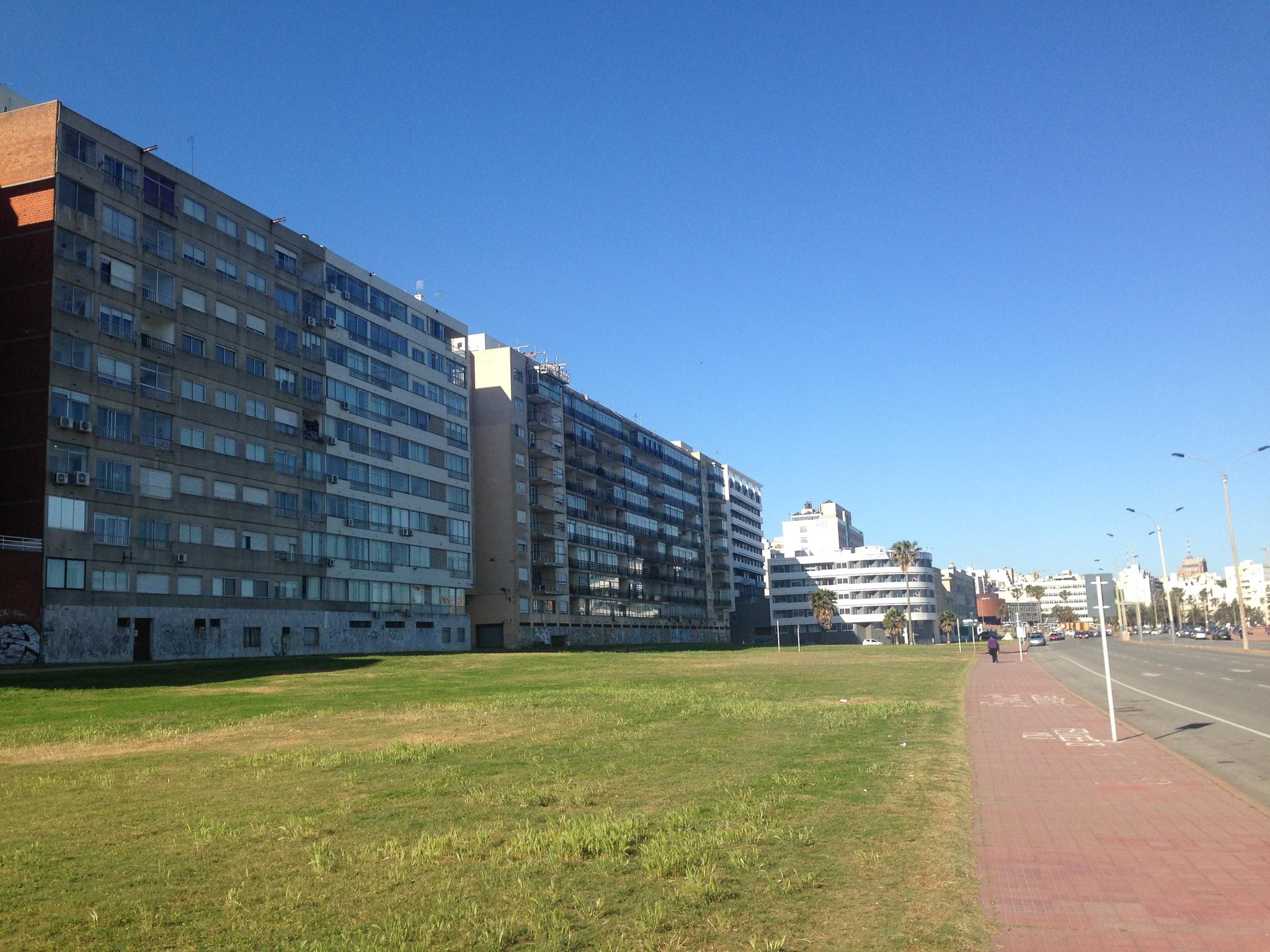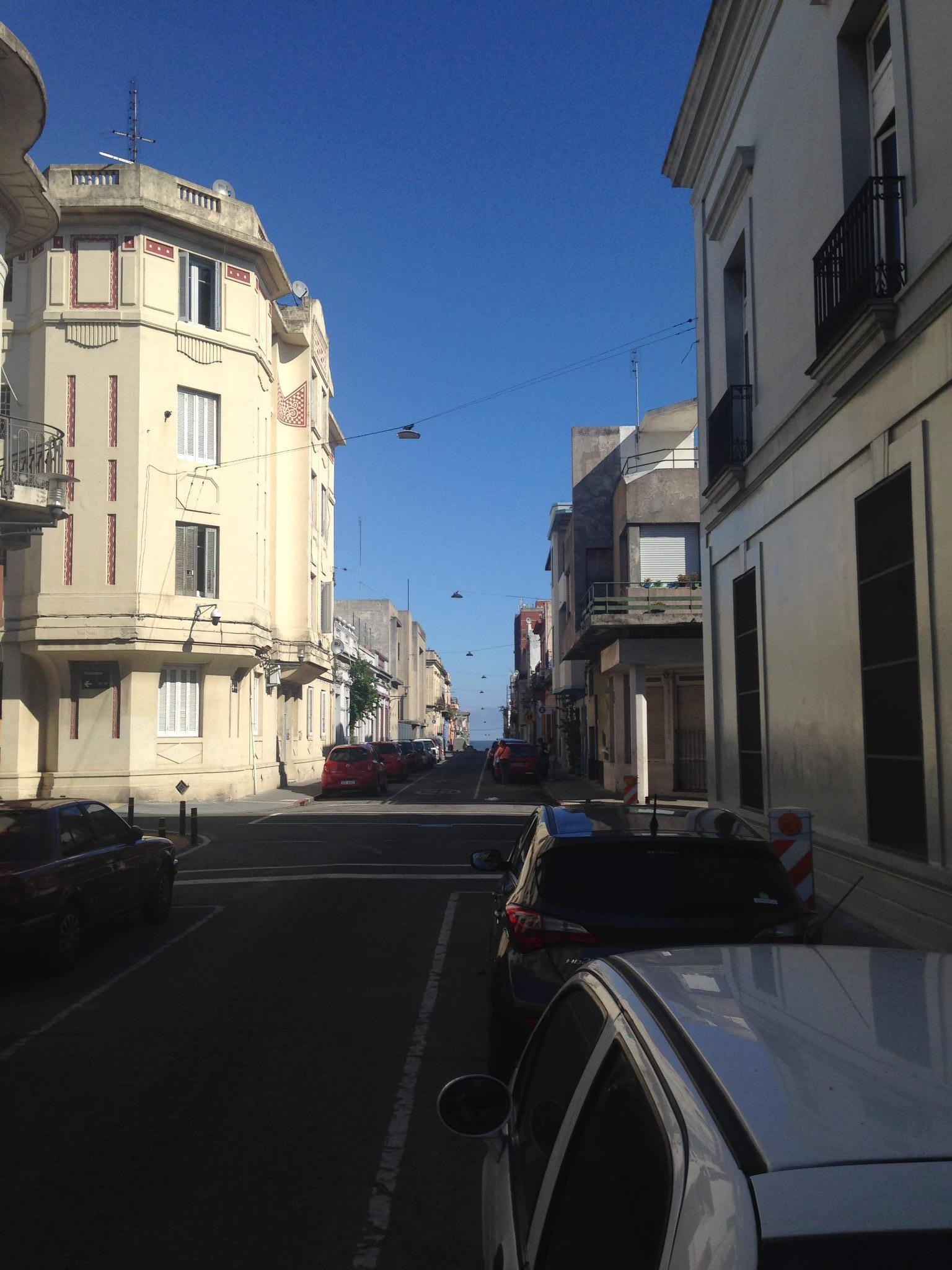A Well-Balanced 'Paisito'
What an intellectual tradition, strong state, mate and a frustrated businessman reveal about the 'paisito' of Uruguay
For comments and alternative views on this article, please see this feed.
November 2018
We take a ferry to Colonia, Uruguay from Buenos Aires. Before boarding we go through Argentine exit immigration and then Uruguayan entry immigration in the same hallway. The immigration officers from both countries are sitting in the same booths. The Argentine and Uruguayan officials smile back and forth. They do not pack heat nor do they ask us anything. The different ways international borders are controlled never cease to interest me. Maybe it is because I come from a country with hard uncompromisingly hard borders with unwelcoming, power-tripping, heat-packing half-cops as guards. I realize that entering my home country the United States and our forever ally Israel are the only times border guards anywhere ever ask me questions about the purpose of my visit.
Colonia is a laid back treat compared to the hustle and bustle of Buenos Aires. There is little to no traffic and everything is walkable. The buildings in the town’s core are an old Spanish colonial style. It is our first Uruguayan town and it has only been a few hours but the difference from Argentina is palpable.
The people are friendlier and less aggressive. The hostel clerk and a gallery cafe owner with whom we converse both say they love being Uruguayan. Multiple people tell me the same thing in the capital, Montevideo. They all have a laid-back feel I never felt in Argentina.

No Rush in the Imitation Nation
No one is in a hurry. We meet 28 year-old David who is still working on his bachelor’s degree. He has changed his major. The state pays for his education as they do for all. “Pretty much no one finishes university in four years,” David says.
When people finish, there are few jobs available. Perhaps this accounts for the slow pace. Why hurry if the student loans do not rush you into jobs, you can live with your parents, and enjoy student life.
David’s father Diego, a retired army officer and now co-owner of a catering business with his wife Ana, says Uruguayans depend heavily on the state for both employment and benefits. This means that taxes are high and by extension prices. Prices in Uruguay are indeed much higher than neighboring nations. “We do not do enough to foster private industry here,” laments Diego. “There were many failed state companies like the airlines which we taxpayers have had to bail-out.”
Moreover, the geographic position of Uruguay does not help. It is a tiny country of about 3.5 million (Uruguayans call it a “paisito”, or “little country” in Spanish) wedged between the two massive Brazil and Argentina that both have very troubled economies. David says people do not use Tinder very much in Uruguay because there are no more than two degrees of separation between everyone in the country. The anonymous, casual hookup is harder to find in this paisito.
Because Uruguay has such a small domestic market, it is hard for internal service industries like to specialize and make a profit. As such, these companies must offer a variety of services. Diego and Ana’s service business does both event catering and runs cafeterias for office buildings.
In a small country, people are also imitators which can lead to stiff competition and limited growth opportunities. “If someone opens a dance studio and it becomes popular, others follow. But at some point there are too many dance studios and then later the popularity for dance may wane as people move on to another trend,” says David’s cousin, Rebecca.
Another example of Uruguay’s imitation culture is the focus on football (soccer). “Everyone wants to be a football star,” say Rebecca and David. Tiny Uruguay has punched well above its weight in international football, most recently making the quarterfinals of the 2018 World Cup.
Perhaps in part because of the focus on football success and the unlimited time people spend in university, Diego says there is a lack of drive amongst the Uruguayan youth. “Today’s youth are always saying that there are no opportunities in Uruguay. The reality is that if you work hard, you can succeed. The young just do not want to work hard and they are too picky about the jobs they can get.” Diego references his daughter, who works in a clerical job at the Uruguayan embassy in Washington, D.C. where she lives with her husband who is a medical researcher. It is a job with which she is not happy. She was trained as a fashion designer. “But what are you going to do?” shrugs Diego. The message is stop complaining and be thankful for the life you have.
“The immigrant employees we have had in our business have actually been by far the best,” Diego continues. “They cannot take anything for granted here. One day there was a transit strike. To get to work, this immigrant employee had to take Uber. However, he did not have a credit card. He called me, asked me for my credit card number so he could take an Uber, and then paid me back in cash that very day. He did not let a transit strike become an excuse to show up late or miss work.”
Many that do finish university try and leave. David says that “we have a serious brain drain.” His sister and brother-in-law, who live in the United States, are a testament to this. David, whose father Diego is of Latvian descent, is trying to get a Latvian -- and thus European Union -- passport. He has also applied to the Green Card lottery through the U.S. embassy.
“So many people have Italian or Spanish passports from their parents and grandparents that many go to the European Union and work,” an Uber driver tells me. He went to Spain on his passport but came back. “I love Uruguay,” he says with a big smile. Before I can ask him what he did in Spain, we arrive at our destination.
Our driver, along with almost everyone in Uruguay, sips mate and carries it with him everywhere. The marijuana-looking tea-like substance goes in a hard, curved cup with a unique metal straw. People carry around hot-water thermoses so they can refill their mate throughout their day. They share the mate with their friends just like stoners share joints.
In Argentina and southern Brazil you see mate in most places. In Uruguay, you have to look hard for people not drinking mate and carrying thermoses. The ubiquitous mate definitely enhances the laid-back feeling. It also adds to the feeling that everyone is imitating each other.
The laid-back feel also comes from the twenty-somethings we meet who have degrees but are not in a hurry to find full employment. “We joke all the time that when you live in Uruguay, you really do nothing,” says Pedro at a bar in Montevideo. Pedro is the partner of Sandra who we meet through Couchsurfing.
Sandra is content with her part-time job as a speech therapist at a school. It pays her enough to live and gives time to lead a relaxed life. Pedro works a series of odd jobs and arrives at our gathering late after one of his restaurant shifts ends. A friend of theirs, Isabella, is a full-time public school counselor. “Working for the state is great. You have security and a steady income,” she says contentedly.
A Nation of Thinkers Supported by Doers?
Uruguay is also famous for its intellectual culture. In Montevideo’s weekend outdoor markets there are copious used-book sellers. A wide diversity of genres and dates of publication are sold. In addition, small locally-run bookshops are common. In other parts of Latin America you do not see books so widely sold. As a friend in Brazil will tell us, “Brazilians think that books are for rich people.” Not so in Uruguay where there is a thriving market for all types of books at all price ranges.
One of Latin America’s most widely known intellectuals, Eduardo Galeano, is also Uruguayan. On a city tour of Montevideo, we pass by the cafe where he wrote parts of his masterwork Las Venas Abiertas de América Latina (The Open Veins of Latin America). The tour guide proudly tells the foreign crowd about Galeano’s work and status as a premier intellectual.

On the same tour, we see the 1943 drawing América Invertida (America Upside Down). This is by Uruguayan artist Joaquín Torres-García where the view of South America is flipped. Three things are notable. First, America means South America, not the United States. Second, the top of the map is the tip of Patagonia which is what most Europeans and North Americans consider “the end of the world”. Lastly, the vast majority of the map is the Southern Hemisphere.
While there are geographic inaccuracies (most of Colombia should be in the Northern Hemisphere), the point is that many maps in the world represent a square inch of the Southern Hemisphere as smaller than a square inch in the Northern Hemisphere. This Uruguayan map seeks to retell the vision and narrative of the world from a non-Eurocentric, non-North American viewpoint.
The tour guide proudly explains that América Invertida is an example of Uruguay’s strong intellectual tradition. Isabella, the public school employee referenced above, also proudly discusses the intellectual tradition of Uruguay. “We probably have the strongest intellectual culture in Latin America,” she opines to the agreement of her friends.
Uruguay’s intellectual image is furthered by the internationally known ex-president Jose Mujica. Mujica fought against the military dictatorship and his jailing is a subject of a Netflix film. As president, he continued to drive an old car and live in his humble country home. He denounces excessive consumption and helped push through the nation’s 2013 legalization of marijuana. Isabella and Sandra both proudly mention that Mujica donated most of his salary to charities that gave the poor homes.
Despite Mujica’s international renown, he is a controversial figure in Uruguay. David and his cousin, Rebecca, state that in Uruguay people either love or strongly dislike Mujica. For David’s father Diego, Mujica represents everything that is wrong about Uruguay.
Diego is ex-military and Mujica fought against the military dictatorship. Additionally, Diego is a small-business owner who speaks forcefully against the bloated public sector and excessive taxation in Uruguay. Mujica, however, is an advocate of a strong state sector. Diego talks at length about how badly much of Montevideo needs repairs but the state bureaucracy makes building permits impossible to obtain.
As a further contrast, Mujica’s house is dilapidated while Diego’s house is updated and well-maintained. Lastly, Diego mentions that the state’s generous outlay for higher education supported by Mujica allows students to study well beyond four years. Subsequently, the youth are not in a hurry and do not prioritize gainful employment. (I must mention that overall he does like his country; his What’s App photo is of the Uruguayan flag and he spent a career serving his country in the army.)
Diego’s side might say that Mujica, Galeano and their followers represent the non-productive, state-enabled intellectual class. The intellectuals criticize capitalism and consumerism but they are enjoying and promoting a lifestyle on the backs of others’ work. For the Mujica and Galeano camp, Diego’s side represents the encroachment of international capitalism that just focuses on profit and productivity at the expense of a truly healthy life and decent standard of living for all.
Another critique of Mujica is that he is popular just because of his image. The above mentioned artist and gallery/cafe owner in Colonia made this critique. It is implied that Mujica sells an image and is not genuine.
Does Mujica benefit politically and personally from his image? No doubt. To a certain extent, everyone has a manufactured image whether we realize it or not. Perhaps a better question is whether Mujica’s policies are right for Uruguay.
Like Mujica’s famous dilapidated home, Montivideo feels like a run-down Eastern-block nation from the 1980s. The architecture is very European with cobblestone streets, tightly pressed together buildings along the streets and Soviet-style apartment blocks ringing the edges of the tightly packed downtown area. In old-European style, streetlights hang from wires that hold them up from both sides of the street. There are holes throughout the cobblestone streets and everything has a somewhat dirty, shabby look. What is not communist, however, is the ubiquity of the homeless in the streets. Their presence furthers the worn-down look of the city.

Furthermore, like a socialist nation strapped for resources, the healthcare system is stretched. The artist and gallery/cafe owner from Colonia complains that Uruguayan hospitals do not have enough equipment and have to share medical machinery. He says that to see a specialist he always has to go to Montevideo. I can see Republicans using this example to argue against “socialized medicine”.
Despite Uruguay’s issues, Uruguay has struck an enviable balance. It is the least unequal country in Latin America and as of 2019 also had the highest GDP per capita in the region. It has produced the Galeanos and the Diegos and it is better off thanks to both. I will take the quaint yet dilapidated streets of another era over a brand-new, North American McMansion. I will take a longer wait to see a specialist if it means everyone has basic health coverage and there are no medical bankruptcies in society. And most of all, I will take an intellectual president who lives in a leaky cottage to one who puts gold in his buildings, demeans women, promotes scientific ignorance, and lies as he breaths. I do hope Uruguay can maintain their balance.

To protect the privacy of some people referenced in this article I have changed their names.

0 Comments Add a Comment?